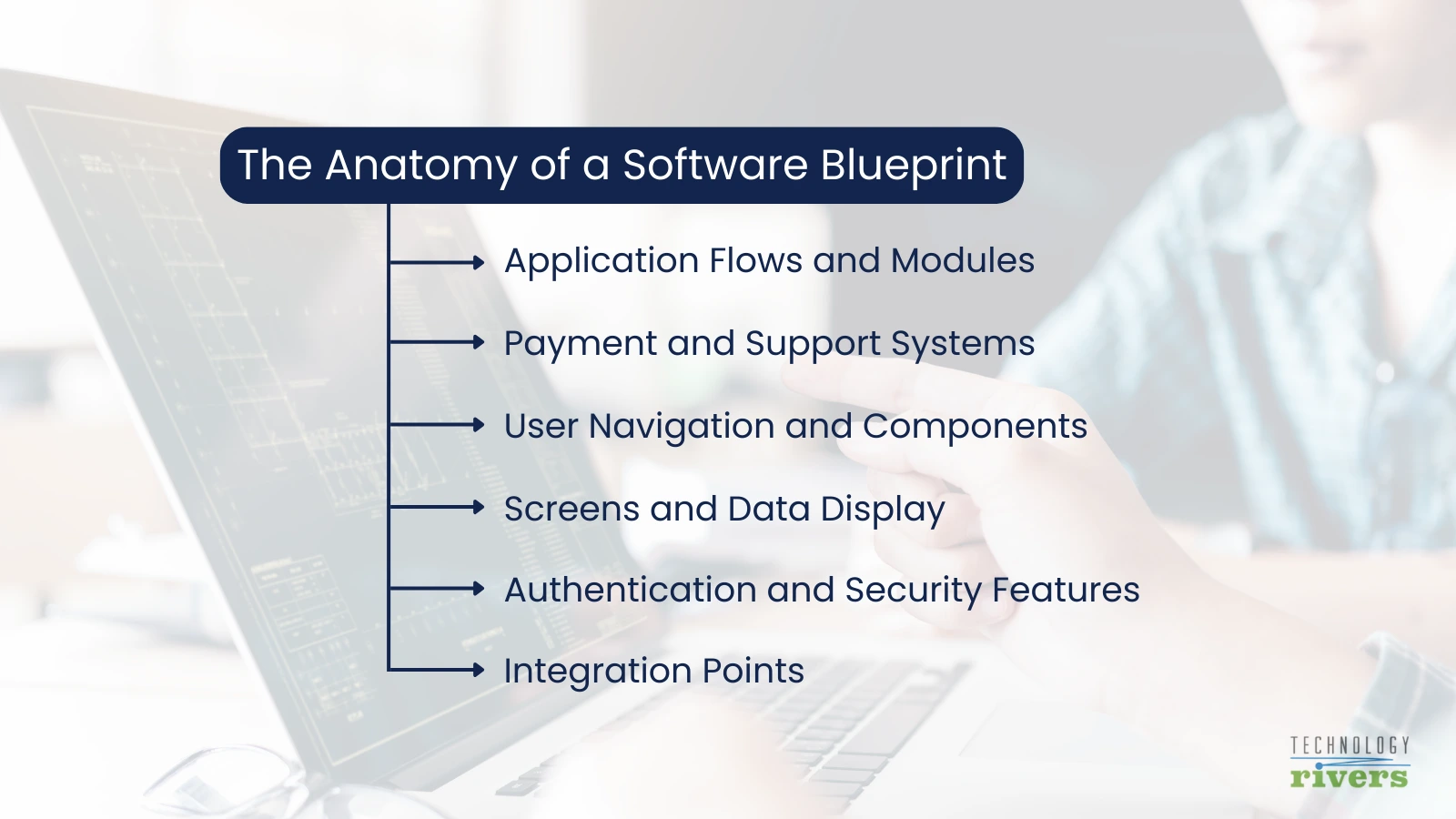Imagine, you’re a year into a major software project. You’ve put in long hours, your team has worked tirelessly, and there’s a significant budget on the line — $200,000 of money your investors trusted you with.
You’re at the point where you’re set to launch your app to your intended audience, but you face an unexpected challenge: they’re finding it confusing, hard to navigate, and they don’t see the need for it.
This isn’t just a disappointment — it’s a nightmare situation for anyone in software development. But why does this happen? Many times, it’s due to the lack of a well-defined plan from the beginning. There’s no clear blueprint from the start.
Have you ever felt lost in a project, unsure of the next step? Ever had to redo large parts of your work because something didn’t fit right or meet the user’s needs? Or worse, have you launched a product only to find it doesn’t solve the problems it was supposed to? These are the real pains of diving into software development without a solid plan.
In this blog, we’re going to address these pain points head-on. We’ll explore the essential role of a blueprint in software development. It’s not just about avoiding the frustration of going back to the drawing board or the embarrassment of a failed launch.
It’s about understanding the nitty-gritty of your project’s needs before a single line of code is written.
We’ll talk about how a detailed blueprint can be your roadmap, helping you avoid common pitfalls like misaligned features, ballooning costs, or creating a product that misses the mark with your users. And we’ll see the real costs – both emotional and financial – of skipping this crucial step.
So, if you’ve ever felt the sting of a project going sideways or the stress of not knowing if you’re on the right track, this is for you. Join me as we delve into the world of software blueprints, uncovering why they’re not just helpful but essential for your project’s success.
The Pitfalls of ‘Winging It’ in Software Development
You know the feeling. You start a project full of excitement, ready to tackle it head-on. But without a clear plan, things can quickly start to go south. This is what ‘winging it’ in software development often looks like, and trust me, it’s far from pretty.
- The ‘What Now?’ Syndrome: First up, there’s the chaos of not knowing what to do next. Without a blueprint, every step can feel like a guess. It’s like being in a maze without a map. You make a turn, hoping it’s the right one, but often, you end up at a dead end. Frustrating, right?
- The Never-Ending Cycle of Revisions: Then, there’s the dreaded loop of continuous changes. Imagine putting weeks into a feature, only to realize it doesn’t fit into the bigger picture. It’s not just about the time you lose; it’s also about the hit your team’s morale takes when their hard work gets scrapped.
- Missing the Mark with Users: Probably the biggest pitfall of all is creating a product that your users don’t find useful or easy to use. This is the real kicker. You’ve put in all this work, but because you didn’t plan with the end-user in mind from the start, it doesn’t solve their problems or improve their lives in any way. That’s a tough pill to swallow.
- Budget Blowouts: Let’s talk money. ‘Winging it’ can lead to spending way more than you planned. Every time you backtrack, every time you have to redo something, it’s not just time you’re losing – it’s cold, hard cash. And in the software world, this can add up really quickly.
- The Stress Factor: Last but not least, let’s not forget the stress it puts on everyone involved. Constant uncertainty, frequent changes, and the fear of failure can weigh heavily on a team. It’s not just about the project; it’s about people’s well-being too.
So, what’s the bottom line here? ‘Winging it’ might seem like the easy route at first, but it’s laden with traps. It’s risky, costly, and honestly, it’s a gamble that’s just not worth taking. In our next section, we’ll dive into why detailed planning is not a luxury but a necessity in software development.

The Importance of Detailed Planning
Imagine spending a year pouring everything into a software project, only to unveil it to your users and find out they hate it. This is the jarring reality for many developers who jump into projects without a detailed plan. Let’s break down why detailed planning is not just helpful but essential in avoiding this kind of disaster.
- Avoiding the Costly ‘Change of Mind’: Picture this: halfway through your project, you realize you need to add a feature, much like deciding to add a basement to a house that’s half-built. Such changes aren’t just a slight detour; they’re expensive, time-consuming, and can throw your entire project off course. Without a plan, you’re constantly at risk of these costly course corrections.
- Ensuring Every Detail Fits: Just like you’d carefully plan the layout of a house, knowing the number of rooms, closets, and even the location of your laundry room, every aspect of your software needs to be thought out. What will the user interface look like? How will the data flow through the system? Neglecting these details in the planning phase can lead to a confusing, cluttered product that users struggle to navigate.
- Matching Your Vision with User Needs: Without a blueprint, there’s a real danger of building something that looks good to you but fails to resonate with your users. It’s like building a house with a beautiful exterior but an impractical interior. Your users are looking for functionality and ease-of-use; they don’t care how sophisticated the code is if it doesn’t meet their needs.
- Budget and Time Overruns: Lack of planning inevitably leads to overshooting budgets and timelines. It’s the domino effect of software development; one unplanned change leads to another, and before you know it, you’ve spent far more time and money than you ever intended.
- The Stress and Frustration of Rework: There’s nothing more demoralizing than having to redo work that you thought was done. It’s frustrating, it’s disheartening, and it eats away at the team’s morale. This can be avoided with a clear plan from the start, ensuring that everyone’s efforts are aligned and moving in the right direction.
In essence, detailed planning in software development is like drawing the blueprint for a house. It’s about knowing what you’re building before you lay the first brick. It’s about aligning your vision with practicality and user needs, keeping your project on budget and on time, and saving yourself a mountain of stress and rework. Next, we’ll explore what goes into a software blueprint and why it’s a critical tool for success.

The Anatomy of a Software Blueprint
Let’s get into the nuts and bolts of what makes a software blueprint so crucial. Think of it like the floor plan of a house – you wouldn’t just randomly start laying bricks and hope for the best, right? A software blueprint works in a similar way. It’s the master plan that guides every aspect of your project. Here’s what it typically includes:
- Application Flows and Modules: This is like mapping out the rooms of your software house. Where does the user start? Where do they go next? Just like you wouldn’t want your bathroom opening right into your kitchen, you need to carefully plan how users navigate through your software.
- User Navigation and Components: Ever been in a house where you can’t find the light switch or the door handle is in a weird place? Frustrating, isn’t it? That’s what happens when user interfaces in software are not well thought out. Your blueprint needs to detail the user experience, ensuring that everything is where users expect it to be.
- Screens and Data Display: Each screen of your software is like a room in your house. What do users see first? What information is crucial? Planning this is like deciding what furniture goes in each room – it has to be functional and appealing.
- Integration Points: Just like planning where to put electrical outlets in a house, your blueprint should specify how different parts of your software will connect and interact with other systems. Missing this step can lead to a lot of rewiring later on.
- Authentication and Security Features: This is about making sure the doors to your house have good locks. Who gets to access what? How do you keep unauthorized users out? Security can’t be an afterthought; it needs to be part of the blueprint.
- Payment and Support Systems: If you’re dealing with payments or customer support, this is like planning the plumbing and electrical systems of your house. They need to work seamlessly and be easy for users to navigate.
Remember, the devil is in the details. The more thorough your blueprint, the smoother your development process will be. It’s all about anticipating problems before they arise and building a software that’s not just functional, but also user-friendly and secure. Up next, we’ll explore why some people skip this vital step and the risks they take by doing so.
The Risks of Skipping the Blueprint Stage
So, what happens when you decide to wing it and skip the blueprint stage? It’s a bit like trying to build a house without a plan. Sure, you might put something together, but the chances of it being safe, functional, and what you actually wanted are pretty slim. Here are the risks:
- Building Something Nobody Wants: It’s like constructing a house only to realize you’ve built it in the wrong neighborhood or it doesn’t meet the local needs. If you don’t plan with your user in mind, you risk creating software that misses the mark.

- Cost Overruns and Delays: Ever heard of a construction project that didn’t have a plan and still came in under budget and on time? Me neither. The same goes for software. Without a plan, you’re almost guaranteed to spend more money and time than you intended.
- Compromised Quality: This is about the integrity of your software. Just like a house, if you don’t plan properly, you could end up with a shaky foundation, leaky roofs, or worse. In software terms, this means bugs, security issues, and poor user experience.
- Increased Stress and Team Burnout: Let’s not forget the human element. The frustration and stress of working on a project without clear direction can lead to burnout and demotivation. It’s like building a house in the dark – stressful, dangerous, and not much fun.
Your Blueprint for a Winning Software Project
Alright, let’s wrap this up. We’ve looked at how software development can go really well or, well, not so well. And it’s clear: having a plan matters—a lot. It’s like the difference between a smooth road trip with a map and getting lost without one. When you plan, you know where you’re going and can avoid those big potholes.
Think about the relief you feel when things go as planned. You’re not just throwing stuff together and hoping it works. Instead, you see your project shaping up just like you pictured it, without spending too much money or redoing things over and over. That’s what a solid blueprint does for you. It turns confusion into clear steps, stress into success, and risks into rewards.
In the world of making software, things can get tricky. But a good plan is like your best tool—it keeps everything together. It makes sure that every part of your software makes sense and works well for the people using it.
And hey, if you’re working on a software project or even just thinking about one, we’re here to chat. At Technology Rivers, we’ve seen it all—the good, the bad, and everything in between. Whether you’ve got questions, want to share your story, or need some guidance, don’t hesitate to reach out.
You’re not in this alone. With the right plan and team, your software project can go from just an idea to something really great.
Please don’t hesitate to get in touch with us and share your thoughts or questions. Remember, when it comes to software, not planning is like inviting trouble. Let’s plan for success, together.













